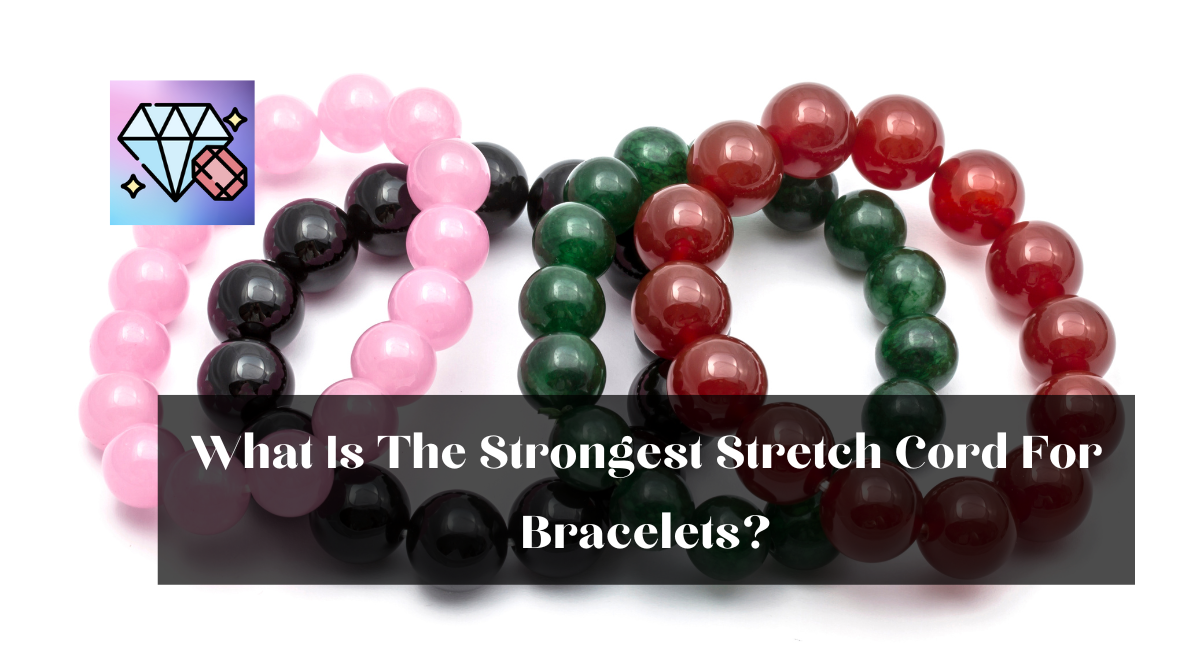The choice of stretch cord is crucial for ensuring the durability and longevity of your jewelry when creating stretch bracelets. The tensile strength of the stretch cord you choose will significantly impact the durability of your bracelets. There are various stretch cord options, but not all are equal in tensile strength. This article, will explain what is the strongest stretch cord for bracelets.
What Is The Strongest Stretch Cord For Bracelets?
Stretch cords are lightweight, colorful, affordable, and indispensable to bead-making. Before experimenting with metal wires, jewelers frequently experiment with elastic cords. Here are the strongest stretch cord for bracelets.
1. Single Strand Cords
Single-strand cords are the most popular form of cord in crafting, primarily because they are inexpensive and simple to manipulate. This form of cord is somewhat rubbery and soft, and it consists of a single strand throughout. Multiple diameters of single-strand cords are available for purchase.
The widest ones are ideal for beadwork involving the heaviest beads and bizarre designs. Due to this, they are more difficult to tie correctly; it would be wise to learn how to tie a surgeon’s knot properly.
2. Stretch Floss
Stretch floss, or flat crystal string, is preferable when working with smaller jewels. Stretch floss is typically 0.5 mm to 0.7 mm in diameter. Our favorite aspect of stretch floss is its multi-strand construction.
The elastic filaments are woven together to give the final material sufficient flexibility. Multistranded connections also possess a greater memory.
This means that the cord is better able to retain its original shape, and the danger of permanently stretching out and making the final product looser than necessary is reduced.
3. Polyester Stretch Cord
Because it is constructed with an elastic structure, polyester cords are inherently thicker than the two cords we’ve previously discussed. This polyester cord is ideal for working with larger and heavier crystals and is commonly used for hair accessories.
The only obvious disadvantage of using this cord form is concealing the bulkier knots at the end. If this does not concern you or if you can find a way to incorporate the knots into your design, feel free to use this cord.
Be aware, however, that it is not a faultless cord either, and if you are interested in creating long-lasting jewelry, you may switch to metal wires.
Tips To Make Bracelet That Don’t Break
I. Compare The Thickness Of Elastic Cords With Beads’ Weight
When making beadwork with elastic cords, the hardest part is figuring out how long each type of cord will last and how it will hold up against the weight of the pattern.
The more beads there are on a cord, the more weight it has to hold up and the more likely it is to break early. When we say “premature breakage,” we mean that your creations fall apart quickly before they have been worn.
II. Compare The Thickness Of Elastic Cords With Bead’s Hole size
The stretchy cord you will be using should still be able to fit into the beads even after you double the beads and add the needle.
We know it can be hard to do this if you buy everything online, so make sure to check the hole sizes of your beads against the size or thickness of the elastic bands you are buying.
III. Elastic Cord Length
Leave three inches of space on either side of the elastic cord that has been cut so that you have enough room for knotting.
You can always trim the excess from a bracelet or necklace, but you cannot add more cord if you run out while tying the knots required to secure the beads and other embellishments.
Additionally, we recommend using bead stoppers to prevent your beads from escaping. Additionally, it is advisable to pre-stretch the cord before stringing beads.
Consider the following factors when selecting the most durable stretch cord for bracelets:
I. Stretch Magic Cord
Stretch magic cord is frequently the cord of choice for bracelet producers. This brand is recognized for its durability and resistance to wear and strain.
It is available in various thicknesses, with thicker cords generally sturdier and more suitable for bracelets with heavier or larger beads.
II. Cord Thickness
The thickness or gauge of the stretch cord is a crucial factor in determining its strength. Thicker cords can withstand greater loads and tension.
Choose a thicker cord when constructing bracelets with heavy beads or stones to support the weight without snapping or losing elasticity.
III. Material composition
stretch ropes are usually made of latex or polyurethane.
Among other things, polyurethane wires are known for being strong and resistant to things like water. They are a reliable choice for jewelry projects that need to last.
IV. Multi-strand cord
Some stretch cords are constructed with multiple strands or layers. These cords have increased durability and tensile strength, making them suitable for use with heftier beads.
Multiple strands distribute stress more equitably, thereby reducing the likelihood of rupture.
V. Testing
Before incorporating stretch cords into jewelry, conducting tests on the material is prudent.
Evaluate the cord’s tensile strength and elasticity by gently stretching it. Consider a thicker cord to extend the life of your bracelet if you observe any symptoms of weakness or overstretching.
VI. Bracelet Design
The design of your bracelet is an important consideration. A stretch cord of standard thickness should suffice if you are constructing a simple and lightweight design.
However, if your bracelet design incorporates numerous weighty or large beads, choosing a thicker and stronger cord is recommended to support the additional weight.
Read More: Best Way To Tie Elastic Bracelet

